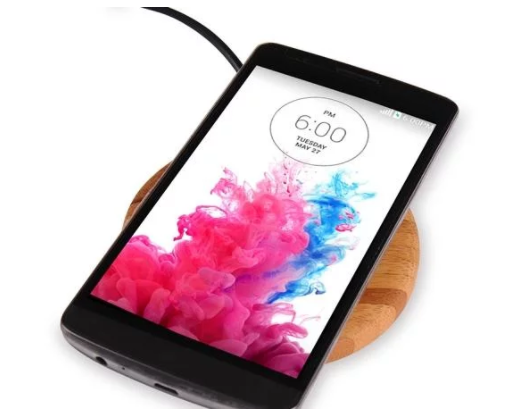The term “wireless charging” is one that’s thrown around a lot by manufacturers and publications alike, but wireless charging can mean different things to different people. When many people refer to wireless charging, they’re actually referring to inductive charging – similar to the technology that the Apple Watch uses. Qi is a standard developed by the Wireless Power Consortium for inductive electrical power transfer over distances of up to 4cm.
The term “wireless charging” often gives people the misconception that your phone isn’t plugged in but will still charge. While that is technically true, the charging pad has to be plugged into a power supply, be it a wall plug, computer or power bank so you’re not completely free from wires.
Now that you know what Qi charging really is, how do you use it with your smartphone?
How to use wireless charging
If your phone is compatible with Qi charging, all you need to do is purchase a Qi charging pad. These can range in price from less than £10 to several times that amount, usually depending on the brand.
All are much the same, with really only price, speed and design to separate them. Some might also work as a stand, while others boast of fast wireless charging – useful only if your phone also supports the feature.
Something to watch out for with wireless charging and the new iPhones is Apple’s terminology during the launch event: the iPhone 8, iPhone 8 Plus and iPhone X will work with all ‘certified’ Qi chargers.
Some of the cheaper devices may not be certified, and though they work with all other Qi-compatible phones we may find ourselves in the same situation as we do with cheap Apple charging cables: an update could stop them working.
Once you’ve got your hands on a Qi charging pad, plug it in and place your phone on top. If you’ve got a Qi enabled phone, it’ll start to charge. It’s that easy.
How to add Qi charging to an unsupported phone
It’s all well and good using a Qi charging pad if you’ve got a Qi-enabled smartphone, but what about those of us who don’t? The good news is that there are alternatives out there – they may not be the best looking, but they should work.
For older iPhones with a Lightning port, for example, there is a viable (and pretty cheap at £21.99) way to enable Qi charging. It may not be the best looking accessory, but the iQi Mobile Qi charging receiver claims to enable wireless charging on your iPhone.
It has a Qi charging receiver with a unique lightning connector that’s connected via an ultra thin ribbon cable. The idea is that, using a thin case, the Qi charging receiver sits between your case and your iPhone with the lightning cable permanently plugged in.
Don’t worry Android users – or anyone else that uses a Micro USB charging port – you haven’t been left out. There’s a similar alternative for Micro-USB priced at £16.18.
Instead of having to slot the Qi charging receiver between your phone and a case, you just stick it on the back with the film provided and plug the Micro USB into your phone. It’s ultra thin and shouldn’t add any extra weight to your phone, making it a great alternative. .
If you have the luxury of being able to take the back cover off your phone there’s a neater alternative. Using the same Qi charging receiver film as above, simply plug the Micro USB cable into the charger, stick the film to the inside of the cover and then reattach the cover to the phone. If you’ve done it correctly, the phone should start to charge when placed on a Qi charger.
Source: http://bit.ly/2hx2cS0











